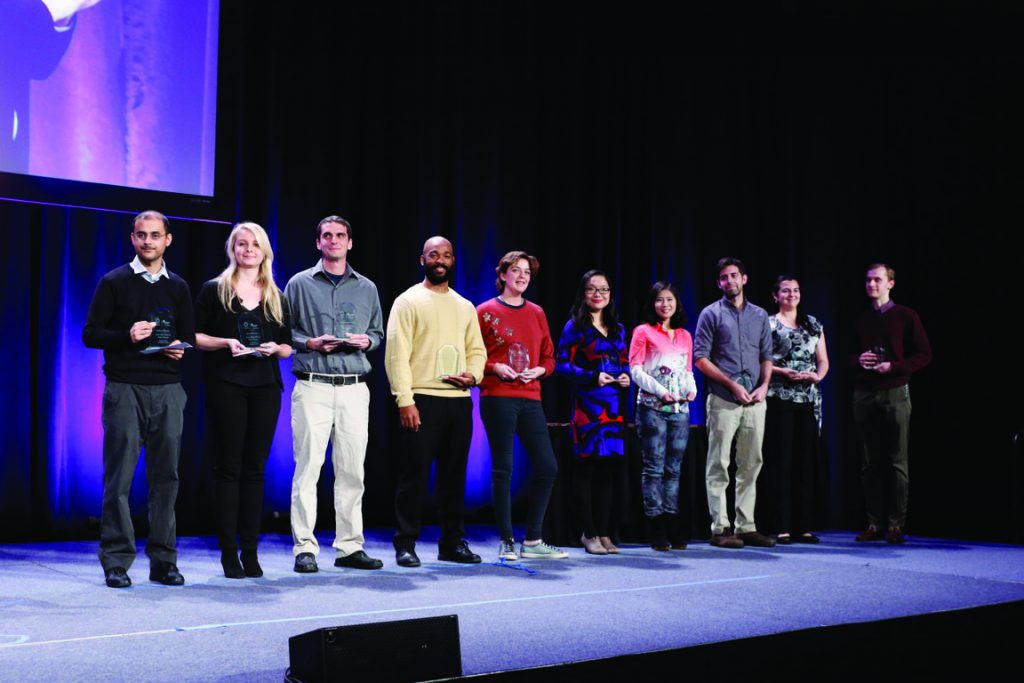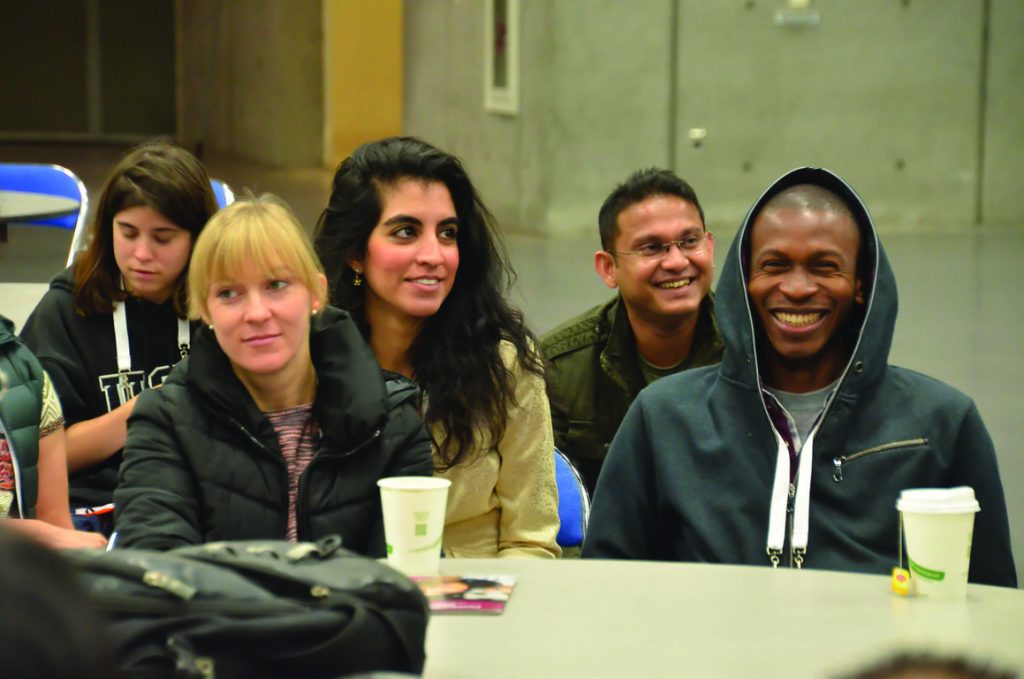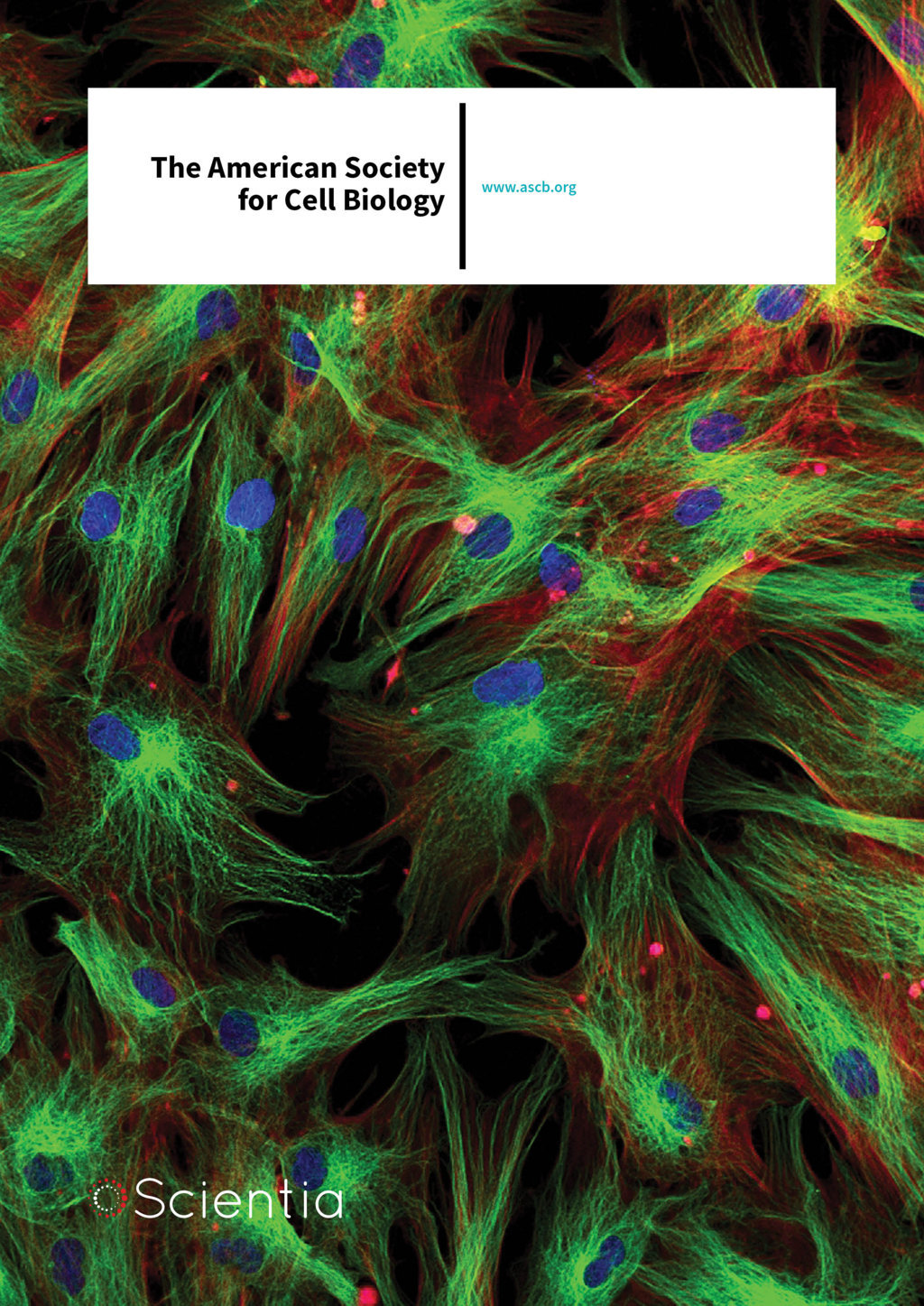The American Society for Cell Biology
Founded over half a century ago, the American Society for Cell Biology (ASCB) is an inclusive, international community of biologists studying the cell – the fundamental unit of all life on Earth. The Society aims to advance scientific discovery, advocate sound research policies, improve education, promote professional development, and increase diversity in the scientific workforce. In this exclusive interview, we have had the pleasure of speaking with Dr Erika Shugart, Executive Director of ASCB. Here we discuss the ways in which ASCB supports biological research, advocates for sound research policies, boosts diversity in the scientific workforce, and much more.
To start, please tell us a bit about the history of ASCB. How was the organisation founded?
The American Society for Cell Biology was first organised at an ad hoc meeting in the office of Keith R. Porter at Rockefeller University on May 28, 1960. In the 1940s, Porter was one of the first in the world to use the revolutionary technique of electron microscopy (EM) to reveal the internal structure of cells. The other early leaders of the ASCB – George Palade, Don Fawcett, Hewson Swift, Arthur Solomon, and Hans Ris – were also EM pioneers. All were concerned that existing scientific societies and existing biology journals were not receptive to this emerging field that studied the cell as the fundamental unit of all life. The ASCB was legally incorporated in New York State on July 31, 1961. The first ASCB Annual Meeting was held November 2–4, 1961, in Chicago where 844 attendees gathered for three days.
The ASCB did not remain an EM society. New technologies and new discoveries in molecular biology, genetics, biochemistry, and light microscopy quickly widened the field. Cell biology has continued to expand ever since, extending its impact on clinical medicine and pharmacology while drawing on new technologies in bioengineering, high-resolution imaging, massive data handling, and genomic sequencing. ASCB membership has grown to 9,000 worldwide (with 25% of ASCB members working outside the United States). Since 1960, 32 past or current ASCB members have won Nobel Prizes in medicine or in chemistry.

‘Our Public Policy Committee members are dedicated to the task of advocating for evidence-based scientific policy and for legislation that supports the public funding of research’
Mention the many ways through which ASCB supports cell biology research in the US and further afield.
ASCB supports cell biology research in the US and internationally through the work of its various committees. Domestically, we support our researchers though the work of our Membership Committee, Women in Cell Biology Committee, Committee for Postdocs and Students (COMPASS), and Minorities Affairs Committee, each of which offer programs, training, career development, fellowships, grants, mentorships, and networking opportunities for diverse populations of cell biologists working in academia, industry, and the government. Likewise, our International Affairs Committee (IAC) works to enhance the engagement of Society members residing outside the United States, as well as foreign nationals living in America. Recently, our IAC has established several memoranda of understandings (MOUs) with comparable scientific societies around the world. The goal of these MOUs is to promote international scientific exchange, to contribute to building capacity in cell biology worldwide, to transcend the complex political issues facing the world today, and to set an example of how to cooperate productively, sharing ideas, and moving forward creatively.
ASCB’s Annual Meeting is the preeminent event for cell biologists to learn about the latest discoveries in their field. In 2017, the meeting is being held jointly with the major European life sciences research organisation EMBO. Additionally, during the meeting the Society hosts events that foster collaboration between domestic and international researchers, such as roundtable discussions and a research and training exchange fair. Science has always been an international enterprise. The international dimension has been strengthened by the 21st century globalisation, which now allows for easier collaboration across countries and cultures. The objective of our partnerships is to take advantage of global connections to enable societies to expand their reach internationally.
ASCB also publishes two journals – Molecular Biology of the Cell, which is our science-focused journal, and CBE Life Sciences Education, which presents education research in cell biology and in the life sciences more broadly.

‘In order for government funding of science to continue, scientists must help people understand the importance of our work’
Tell us a bit about how ASCB works to advocate sound research policies in the US, and mention one or two of your success stories to date.
ASCB has focused on public policy since 1988. Our current Public Policy Director, Kevin Wilson, has worked tirelessly on Capitol Hill to advocate for sound research polices. In addition, our Public Policy Committee members are dedicated to the task of advocating for evidence-based scientific policy and for legislation that supports the public funding of research. Kevin keeps our Public Policy Committee members informed about critical issues affecting science. In turn, they regularly make trips to Capitol Hill, send messages about critical legislative action to local legislators, write letters to the editor and op-ed columns, and act as conduits through which local leaders and neighbours find out what is happening in their own backyard.
In terms of success stories, there was a media and political firestorm in 2011 and 2012 about revelations that certain federal agencies had spent large amounts of money for employees to travel to and participate in what were portrayed as frivolous team-building activities. In an effort to quell the media storm, the Obama administration issued a directive placing limits on the use of federal funds for employee travel and conference participation. Congress took it a step further, and included the administration’s directives in several bills, making the limitations the law of the land. There was only one problem. Both the administration and Congress failed to carefully define the word ‘conference’. The problem was so big that the Department of Health and Human Services had to issue a document entitled ‘Typical Meetings and Events That Are Not Conferences’.
As the ASCB Program Committee worked to finalise speakers for the 2013 Annual Meeting, many of its National Institutes of Health (NIH) speakers began to cancel their plans to participate. We learned that in an effort to enforce the travel restrictions, NIH was limiting intramural researchers to only one scientific conference each year. To resolve the dilemma, ASCB, joined by other professional societies, worked with Congress to correct the mistake. In 2014, Congress attempted a temporary solution, acknowledging that the fix was ‘to ameliorate an unintended consequence, which has been reducing the attendance of US scientists at international scientific meetings’.
One of the numerous provisions in the 21st Century Cures Act recently signed into law by President Obama is Section 3074, ‘Scientific Engagement’. The section says, in part, that ‘scientific meetings that are attended by scientific or medical personnel, or other professionals… for whom attendance at such meeting is directly related to their professional duties…shall not be considered conferences’ for either compliance with travel reporting requirements or travel restrictions.

While the mistake and the fix impacted only a small number of scientists, it was important to the entire scientific community. Science is collaborative and depends heavily on interaction and the exchange of ideas and information that can take place face-to-face only at a scientific meeting. A reduction in the number of federal scientists at scientific meetings would adversely affect research done by those who collaborate with federal scientists and benefit from and depend on the advances made at federal laboratories.
Along with leading an effort to fix an error in federal travel policy, the ASCB issues White Papers and Position Papers on various topics of concern to the scientific community. For example, in 2014, the ASCB issued a White Paper that examined key opportunities in the field of stem cell research. The paper made a number of important recommendations on how to move the field forward. That report has served as the foundation for policy decisions by both the National Center for Advancing Translational Sciences at the NIH and at the Allen Institute for Cell Science.
Describe how the organisation achieves its goal of increasing diversity in the scientific workforce, in the field of cell biology.
ASCB has always been at the vanguard of groups working on increasing diversity in the biomedical sciences. In 2004, ASCB was awarded a US Presidential Award for Excellence in Science, Mathematics and Engineering Mentoring for the work of its Minorities Affairs Committee (MAC). We are pleased to offer programs that support the goal of increasing diversity in the scientific workforce for both women and underrepresented minority groups.
The goal of the MAC is to significantly increase the involvement of underrepresented minority scientists in all aspects of the Society. A long-range goal of the committee is to contribute to the nation’s effort to increase the number of underrepresented minority scientists. To that end, ASCB offers travel awards for members of these populations to attend our annual meeting. At the meeting, we offer mentoring and professional development programs aimed at trainees. Our Visiting Professorship Program supports professional development of faculty at primarily undergraduate teaching institutions that serve minority students and scientists by funding them to spend a summer working alongside an ASCB member at a research-intensive institution. The Faculty Research and Education Development (FRED) Program is a year-long program offered by the ASCB to promote grant funding success of junior faculty at institutions with a strong commitment to recruiting students from backgrounds underrepresented in STEM to the field of cell biology. We also offer an intensive summer workshop for postdocs and junior faculty to help them be successful in their careers.
Our Women in Cell Biology (WICB) Committee promotes gender equality and diversity by providing career development programs, mentoring, speaker referral lists, achievement awards, child care grants and web-based resources for women working in the field of cell biology. During the annual meeting, WICB offers career discussion and mentoring roundtables, as well as a ‘mentoring theatre’, where workplace scenarios are performed and discussed. And ASCB has an extensive network of women in cell biology who support one another through mentoring and outreach as well as a career advice column in the ASCB Newsletter.
How do ASCB help students and postdoctoral researchers achieve success early in their careers?
In addition to the professional development programs mentioned above, ASCB provides a number of professional development and support resources for early career scientists. Our early career meeting grants, which are available to both domestic and international researchers, encourage graduate students and postdocs to team up to host regional scientific meetings. Other resources include ASCB’s online CV review, career development help on our website, our Dear Labby advice column and WICB columns in the ASCB newsletter, and an impressive collection of career workshops presented at the yearly meeting. Workshops at the annual meeting cover topics from how to apply for grant funding, science writing and science policy, advocacy communication, teaching and administration skills, oral presentation skills, mentoring, and research opportunities abroad, just to name a few.
In the summer, we offer our very popular and highly competitive biotechnology management course, presented in conjunction with the Keck Graduate Institute in California. This week-long residency course provides PhD and postdocs with an introduction to and an overview of the skills needed to launch a non-academic scientific career. Past students rave about the networking connections they have made and the course content, which includes a team project.
Finally, please describe your work in the areas of education and public outreach. How does the ASCB help to inspire school children, college students and the general public to develop an interest in cell biology?
Public outreach is a critical part of ASCB’s mission. In order for government funding of science to continue, scientists must help people understand the importance of our work. In 2016, ASCB’s Committee for Postdocs and Students (COMPASS) Outreach Grant program made 11 programs possible to bring fun and interactive science programs to children of all ages. The projects, which were proposed by ASCB members, funded projects in places as far flung as Brisbane, Australia, and inner city Philadelphia. These grants, of up to $1,000, help ASCB members engage with local schools, science fairs, and society.
In the summer of 2014, ‘Life: Magnified’, an exhibit of 46 eye-popping colour images of life on the cellular level, opened in the airport’s Gateway Gallery in Concourse C. ‘Life: Magnified’ was a collaborative project of ASCB, the National Institute of General Medical Sciences (NIGMS) of the National Institutes of Health (NIH), and the Metropolitan Washington Airports Authority (Airports Authority) with support from ZEISS.

ASCB’s Public Information Committee (PIC) is the outreach arm of the Society, promoting public awareness of the latest advances in cell biology and the crucial importance of basic research for human health. PIC’s major activities are member lab-generated commissioned videos, and a One-Minute Selfie Elevator Speech Contest. Year round, PIC supports science communication training and outreach media projects to open the eyes and ears of the world to cell biology.
ASCB’s Education Committee (EdComm) also has been at the forefront of professional scientific societies to respond to the call for undergraduate life science education reform and offers two programs that allow participants to develop the student-centred teaching skills necessary for promoting maximum student success through long-term one-on-one mentorship. The Promoting Active Learning and Teaching (PALM) Network is a joint venture among ASCB and several other life science professional societies that focuses on developing active learning strategies for reform of the traditional lecture classroom. The Mentoring in Active Learning and Teaching (MALT) program focuses on mentorships that extend participant research (or other research projects) into course-based undergraduate research experiences (CUREs) that will lead students to experience authentic scientific research. While both PALM and MALT are dedicated to promoting sustainable reform to undergraduate life science teaching practices, their specific foci in attaining this reform are distinct.
And although the primary audience for our website is our membership base, anyone is free to read the articles we publish to the ASCB Post or that are archived in our ASCB Newsletter.

